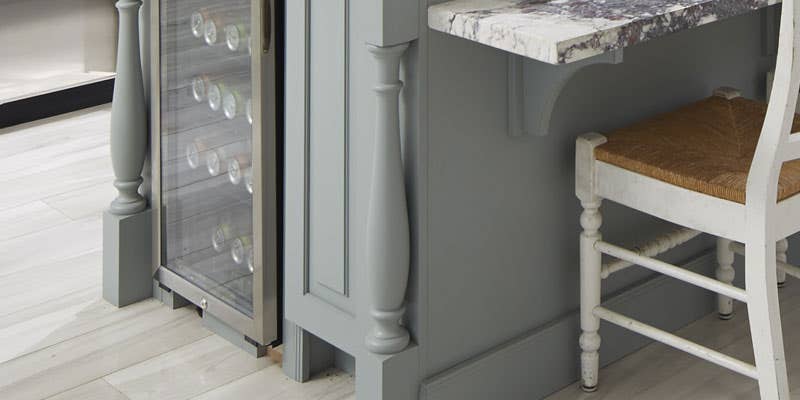Rely on Professional Craftsmanship for Tailored Legs For Kitchen Island Ideas
Rely on Professional Craftsmanship for Tailored Legs For Kitchen Island Ideas
Blog Article
A Guide to Picking the Perfect Legs For Cooking Area Island for Your Home
Picking the excellent legs for your cooking area island is a nuanced choice that affects both the functionality and visual allure of this main area. As you consider these elements, it comes to be obvious that the ideal legs can transform not only the appearance of your kitchen area yet additionally its functionality for years to come.

Recognizing Kitchen Island Legs
When picking legs for a kitchen island, it's necessary to comprehend their visual and functional functions in the total design. The legs act as a critical support system, making sure security and toughness for the island, which often works as a work space, dining area, or gathering place. The choice of product and construction technique have to be durable enough to stand up to day-to-day use and possible wear.
In addition to their structural responsibilities, legs add considerably to the island's visual charm. They can enhance the kitchen's design, whether via conventional, contemporary, or eclectic designs. The elevation and percentage of the legs are likewise vital factors to consider; they have to harmonize with the island's counter top elevation while ensuring comfy seating for those using the area.
Furthermore, the leg layout can influence the overall circulation of the cooking area. Open, ventilated leg designs can create a feeling of lightness, while solid, considerable legs might communicate a much more grounded and stable visual - Legs For Kitchen Island. Understanding these practical and visual facets will certainly direct property owners in making educated options that match their kitchen's style and improve its functionality
Popular Styles and Products
The selection of legs for a cooking area island includes a selection of popular styles and products, each offering special attributes that can improve both functionality and looks. Among the most in-demand designs are modern, rustic, and standard. Contemporary legs frequently feature smooth, minimalist styles that stress simpleness and clean lines, making them suitable for contemporary kitchens. Rustic styles, on the other hand, embrace all-natural components and frequently showcase recovered timber or distressed coatings, adding warmth and appeal to the area. Conventional legs generally exhibit ornate information and workmanship, enhancing classic kitchen styles.

Height and Stability Considerations

Security is another important factor to consider. The legs of the kitchen island must provide adequate support, guaranteeing that the framework can stand up to day-to-day usage without moving or wobbling. Product selection plays a significant role in stability; metal legs, for example, have a tendency to use higher toughness compared to wood. Furthermore, guaranteeing that the island is firmly anchored to the flooring or wall surface can improve security, especially for larger islands that may bear substantial weight.
Matching Your Kitchen Visual
Selecting the ideal legs for your kitchen island goes beyond functionality; it also plays a considerable role in the overall aesthetic of the room. When choosing legs, think about the design style of your kitchen area. For a contemporary look, sleek steel or minimalist designs can create a tidy, contemporary vibe. On the various other hand, rustic or conventional kitchens often take advantage of wood legs with detailed detailing or a troubled coating, enhancing warmth and character.
Shade is an additional vital element. Legs that complement or contrast with your island's surface and surrounding cabinetry can produce visual consistency or striking focal points. As an example, pairing dark wood legs with a light marble countertop can include depth and rate of interest. In addition, think about the finish of the legs; matte, shiny, or textured coatings can significantly impact the total feeling of the kitchen area.
Setup and Upkeep Tips
Mounting cooking area island legs requires careful interest to detail to make sure both stability and aesthetic charm. Begin by picking a suitable location for your island, guaranteeing it is level and has adequate area for activity. If you are attaching the legs to a wall surface or utilizing brackets for added support, use a stud finder to situate wall studs. Mark the positioning of the legs precisely before drilling.
When click site safeguarding the legs, use top notch screws and, if required, wood adhesive for extra stamina. For steel legs, guarantee that you are utilizing appropriate supports and devices to avoid damages to your floor covering. It is a good idea to look for levelness after installment, making adjustments as required to prevent tottering.
Upkeep is similarly essential for long life - Legs For Kitchen Island. Regularly examine the legs for any type of indications of wear or helping to loosen, especially in high-traffic locations. Tidy the legs with an ideal cleaner, staying clear of unpleasant materials that might damage read the surface area. For wood legs, consider using a wood conditioner occasionally to keep their finish. By following these setup and maintenance tips, you can guarantee that your kitchen island legs remain both aesthetically appealing and useful.
Conclusion
In verdict, selecting the appropriate legs for a kitchen area island requires careful factor to consider of height, security, and aesthetic compatibility. Eventually, thoughtful leg option plays a vital role in raising both the practicality and style of the cooking area area.
When picking legs for a kitchen island, it's crucial to understand their useful and aesthetic duties in the general layout. Open, ventilated leg styles can produce a feeling of lightness, while solid, considerable legs might convey an extra based and stable aesthetic. The legs of the cooking area island should supply ample support, guaranteeing that the structure this contact form can hold up against daily use without shifting or wobbling.Setting up kitchen area island legs calls for mindful attention to detail to guarantee both security and visual allure.In verdict, picking the appropriate legs for a kitchen island requires cautious consideration of height, security, and aesthetic compatibility.
Report this page